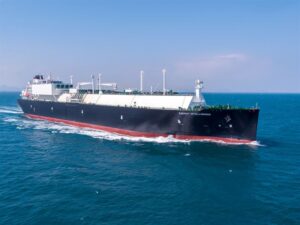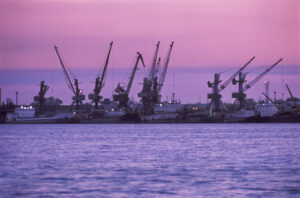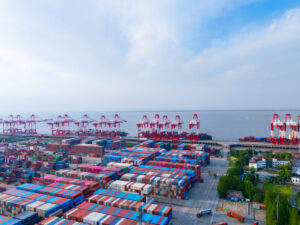Improved data standards will be an important factor for supply chain resilience against future disruptions, A.P. Moller – Maersk (Maersk) analysts have said.
The logistics sector has been plagued by several disruptive events – spending habits changed by COVID-19, outbreaks of the virus at Chinese manufacturing ports, and the Suez Canal incident – which has given the supply chain managers a “seat at the table” in company board rooms, argued Martin Holme, Global Head of Lead Logistics at Maersk.
During a Maersk webinar on supply chain digitalisation on 26 August, Holme promoted a ‘digital twin’ model of end-to-end visibility of goods, from manufacturing to end customer in order to build resilience against disruptive events,.
To do so requires information such as Estimated Time of Arrival (ETA) to be submitted by all agents in the logistics chain – but Holme said the logistics industry continues to struggle to establish standards for data exchange.
“A lot of [challenges on goods visibility] is around standards,” he said. “The logistics industry struggles to establish good standards for what these electronic messages look like – that means [visibility] can be quite difficult.”
Holme noted that Maersks’s new NeoNav platform has created a data submission platform so logistics partners can “come as they are” – submitting data in their own format, which the NeoLav platform translates into its own platform and standardises information for compatibility.
“It is something as an industry and a community to get better at – we’re getting better and more aligned, but there are many challenges,” he added.
Data exchange is indeed beginning to improve and in July 2021 the Digital Container Shipping Association (DCSA) launched a programme to allow solution and service providers to validate adoption of standards based on the DCSA Self-Certification Checklist (SCC).
Further, in April 2021, major carriers including Ocean Network Express (ONE) and Mediterranean Shipping Company (MSC) adopted DCSA Track & Trace (T&T) standards.
Michael Nielsen, Founder of S-Nielsen Advisory and expert on Supply Chain Management (SCM), added that having a single system of record for data submission is fundamental for a digital twin visibility of the supply chain.
“When building a digital twin, have a look at your supply chain partners,” Nielsen said. “What are their capabilities for them to provide the right data at the right time? There are lots of passes involved in [supply chain] transportation – if [partners] are not capable in providing that information, it’s difficult to get full visibility regardless of the technology you have.
“It is how the individual partner treats their data,” he added. “You need to have that foundation in place to transform processes and businesses.”








